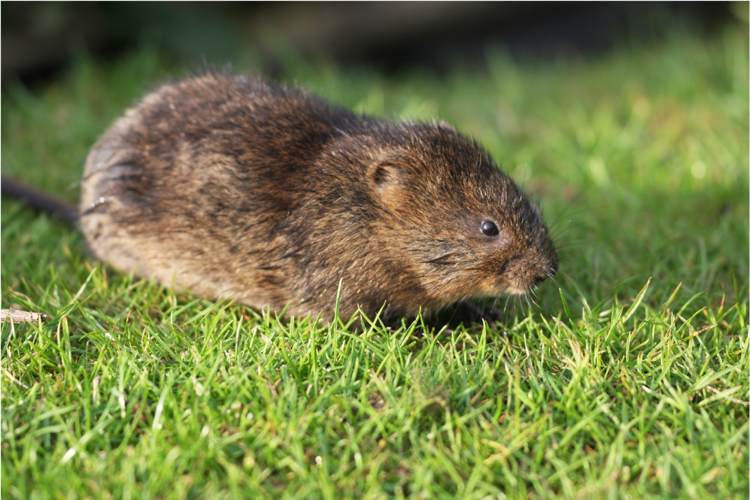Mastering Vole Parasite Control: Thorough Insights on Infestation Avoidance and Therapy Methods
As residential property owners and caretakers, the visibility of voles can present a considerable obstacle to preserving the integrity of our exterior rooms. Recognizing the complexities of vole behavior is critical in establishing effective bug control techniques. By recognizing the subtle signs of vole problem early on, we can take positive steps to stop prevalent damages. In this discussion, we will certainly explore the nuances of vole habits, explore the recognition of problem indications, and uncover the most efficient prevention and treatment methods. Stay tuned to discover the understandings that will equip you to grasp vole parasite control and guard your residential property versus these evasive rats.
Comprehending Vole Behavior
Examining the foraging patterns of voles supplies beneficial understandings into their actions and habitat choices. By observing their foraging actions, researchers can obtain a far better understanding of where voles like to establish their habitats and the extent of their ecological effect.
Research shows that voles display careful feeding behaviors, liking bulbs, origins, and seeds. This dietary choice influences their foraging patterns, leading them to locations rich in plants and ground cover. Furthermore, voles are recognized to produce elaborate tunnel systems for foraging and nesting purposes, showing a high level of flexibility to their environments.
Recognizing vole habits is vital for executing targeted parasite control actions that interrupt their environment preferences and foraging activities (vole yard damage). By examining their habits, experts can create a lot more efficient avoidance and therapy techniques to manage vole problems

Identifying Signs of Vole Invasion
Vole problems can be found by identifying particular signs of their visibility in an area. One of the most typical indications of a vole infestation is the existence of surface area runways.
Another essential sign of vole invasion is the visibility of little burrow openings in the ground. Additionally, voles are known to leave behind chewed plant stems, origins, and light bulbs near their burrow openings, showing their feeding task in the area.
Discovering these droppings along runways or near burrow openings can verify a vole invasion. By being alert for these signs, residential or commercial property owners can immediately attend to vole problems and protect against more damages.
Carrying Out Positive Prevention Actions

Moreover, utilizing natural vole deterrents like castor oil-based repellents or killer pee can function as efficient safety nets. It is also this website advisable to routinely inspect outdoor areas for any indicators of vole activity, such as paths or delve openings, to attend to prospective infestations without delay. vole yard damage. By embracing these positive avoidance methods, residential or commercial property proprietors can significantly minimize the possibility of vole damages and preserve the health and aesthetic appeals of their landscapes
Efficient Therapy Methods
Incorporating targeted capturing methods and making use of authorized rodenticides are important parts of effective treatment approaches for managing vole problems. Trapping can be an effective means to decrease vole populaces, especially when put purposefully in their active runways. Break catches and live catches can both be effective, with the latter enabling for the capture and moving of voles. When using rodenticides, it is important to adhere to safety guidelines to stop damage to non-target pets and family pets. Area rodenticides in protected bait stations to reduce threats to unplanned targets. Additionally, habitat modification, such as decreasing ground cover check this site out and getting rid of sources of food, can assist hinder voles from infesting a location. Routine tracking and upkeep are likewise crucial elements of successful therapy approaches to ensure that vole populations are maintained under control. By incorporating capturing, rodenticides, habitat adjustment, and constant tracking, efficient vole insect control can be accomplished.
Tracking and Upkeep Tips
Normal monitoring allows for the early detection of vole task, making it possible for prompt intervention before invasions aggravate. To effectively monitor vole populaces, purposefully placed traps can be used in vole paths or near burrow entrances.
Furthermore, keeping a clean and clean landscape is important in vole prevention. Clearing up away particles, such as piles of timber or thick plant life, removes potential vole environments. Routinely trimming grass and cutting vegetation assists minimize vole concealing areas and lessens their access to food sources.
Furthermore, continuous maintenance of physical barriers, such as fencings or cable mesh, is crucial to avoid vole intrusion. Inspecting and fixing any type of damages to these frameworks makes sure that vole control stays efficient in protecting homes from invasions. By integrating these monitoring and maintenance practices into a comprehensive vole pest control strategy, people can properly take care of vole populations and protect their properties from damages.
Final Thought
To conclude, mastering vole parasite control needs a solid understanding of vole habits, the ability to recognize indications of infestation, implementing aggressive prevention steps, reliable treatment approaches, and consistent tracking and maintenance. By taking a detailed approach to vole control, individuals can effectively handle and prevent invasions, ultimately securing their building and surrounding atmosphere from damages triggered by these tiny rodents.
In this discussion, we will certainly check out the subtleties of vole actions, dig right into the identification of invasion indications, and uncover the most effective prevention and therapy approaches.Incorporating targeted trapping techniques and making use of accepted rodenticides are necessary parts of reliable therapy strategies for handling vole invasions. To successfully check vole populaces, strategically placed traps can be utilized in vole paths or near burrow entries. Evaluating and repairing any damages read more to these structures ensures that vole control continues to be effective in guarding homes from invasions. By integrating these tracking and maintenance practices right into a thorough vole parasite control strategy, people can properly take care of vole populaces and shield their homes from damage.